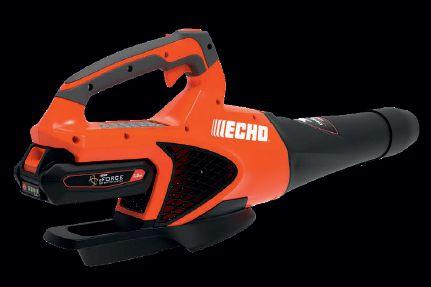turfandrec.com
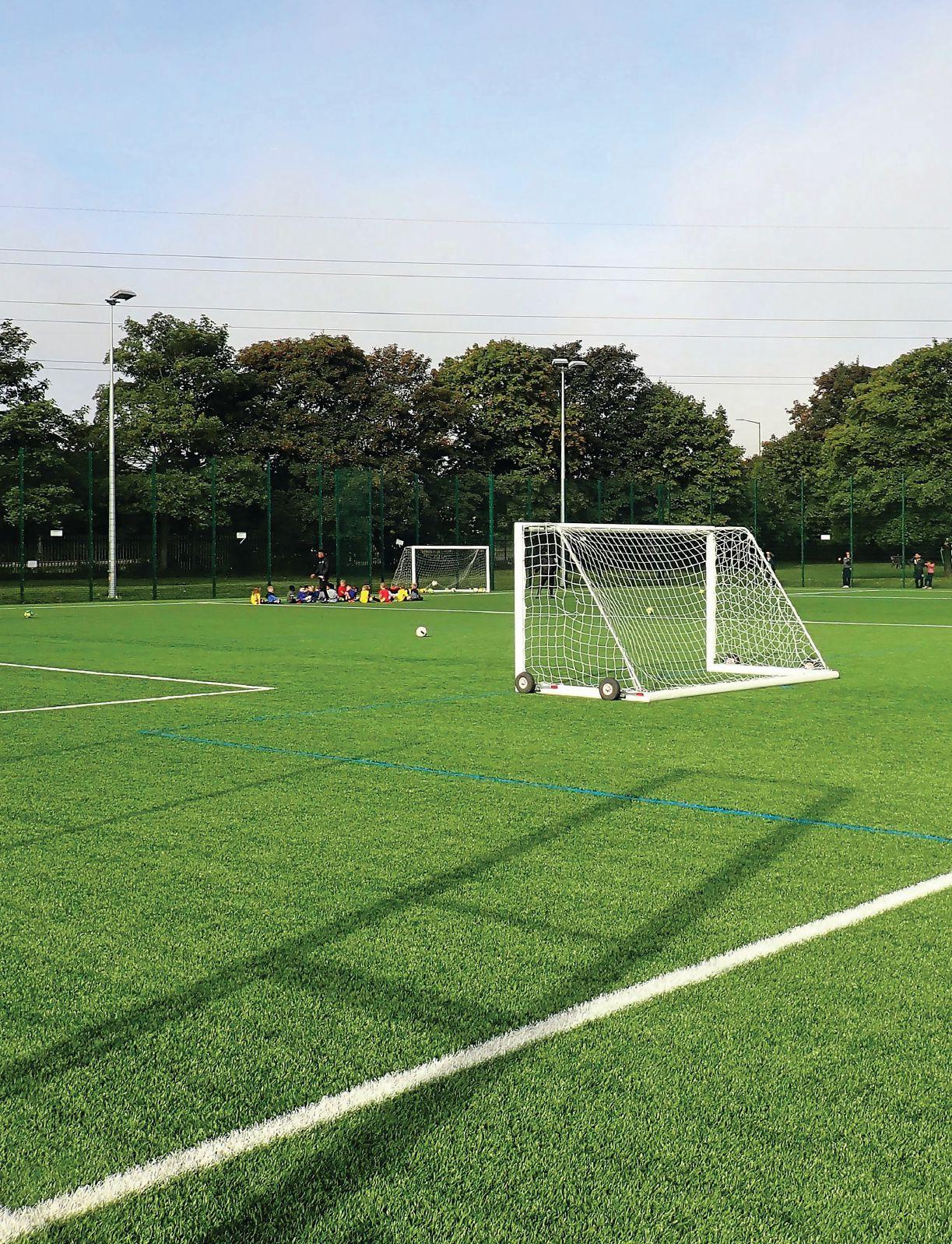

turfandrec.com

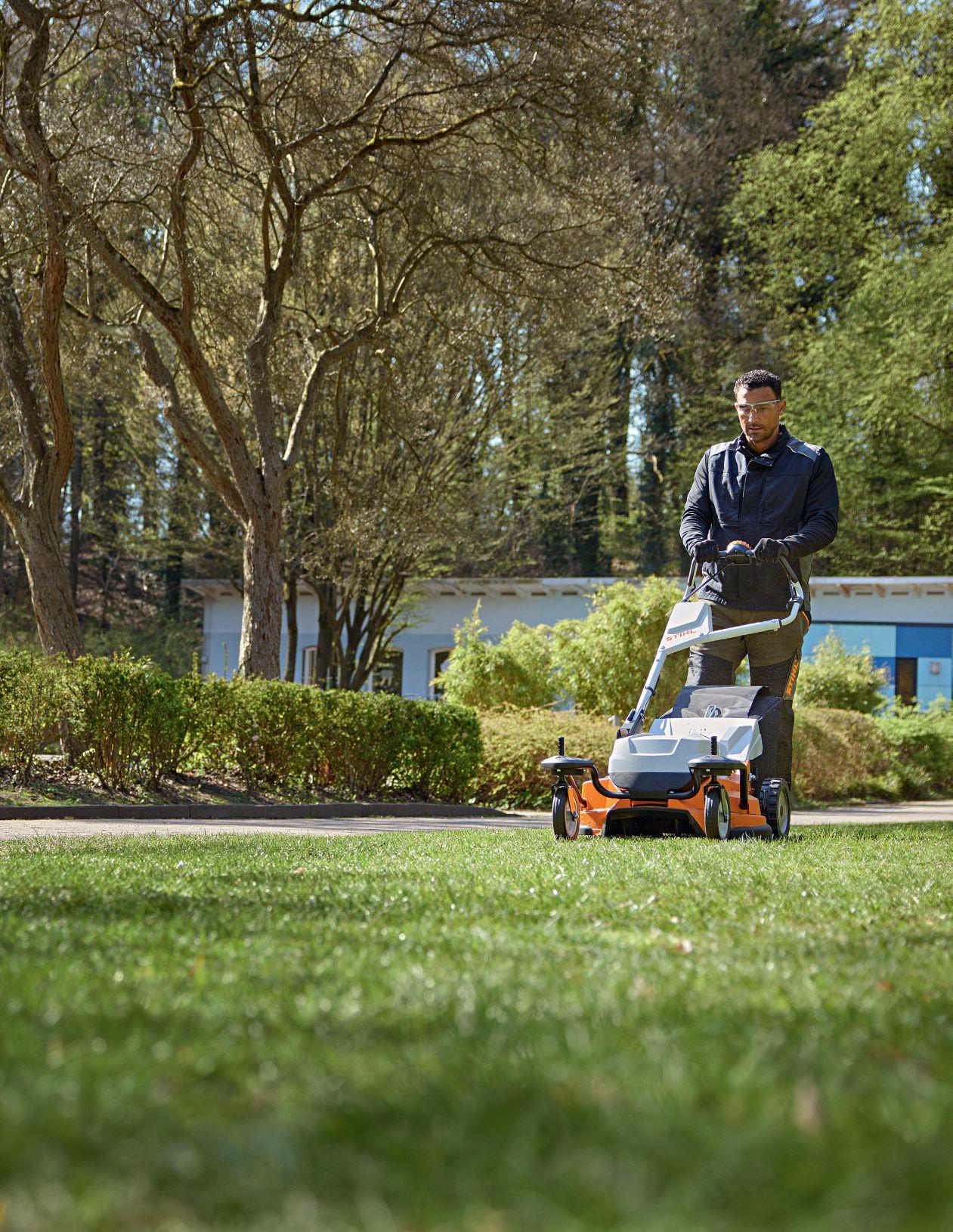
SELF-PROPELLED LAWN MOWER①
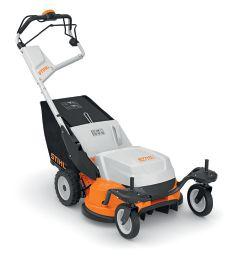
COMMERCIAL BATTERY LAWN MOWER.
The NEW professional RMA 765 V battery self-propelled lawn mower is great for landscape professionals. This lawn mower features a 25" cutting width, a 2-blade flowoptimized mowing deck, 8 stage cut-height adjustment and electric vario wheel drive. Additionally, this mower has an 80-litre grass catcher box. The RMA 765 V can be powered in two ways, first using a AR 2000 L or AR 3000 L backpack battery, or second through the RMA 765 double battery adapter (ADA 700) powered by two AP batteries (6909 400 9401).
Battery Power. Made by STIHL.
STIHL’s Pro-Fleet Commercial Landscape Program is designed to provide commercial landscapers a volume discount on purchases of five or more landscaping power tools. Receive additional savings on STIHL battery products until June 30, 2023. Visit your STIHL Dealer today to learn about our power, performance and durability difference


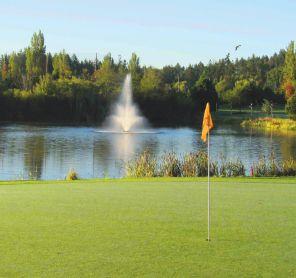
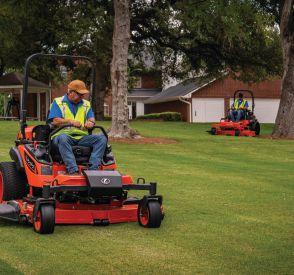
06 | In the news
No Mow May plan ‘misguided’ say university turfgrass experts 22 | Research
GTI weighs in on No Mow May’s shortcomings

By Mike Jiggens
The artificial turf business is one that has grown and prospered over the decades. A far-better quality product has emerged since its beginnings in the 1960s, and synthetic surfaces have been embraced by municipalities in the form of sports fields, by homeowners in the form of backyard green spaces and by avid golfers who desire a practice putting green on their property.
Opinions about artificial turf vary and cover all points of the spectrum. There are sports turf managers who appreciate synthetic fields’ ability to be game-ready immediately following a rain event. Spectators appreciate the never-smudged lines and numbers that pop out on the field. Recreational golfers appreciate being able to slip out their back door to practise their putting stroke on a surface which never needs to be mowed, watered, aerated or fertilized.
But what does the average person think about artificial turf – the one who isn’t necessarily a soccer or football athlete or who isn’t necessarily a golfer or a spectator of such sports?
An environmental social scientist from Minnesota recently tackled a project in which he sought the general
public’s perception of artificial turf. Gathering data from both an online survey of 1,000 people and an in-person survey of 50 people who had access to artificial turf at a municipal park, he presented his findings this past winter at the Ontario Turfgrass Symposium.
Turf & Rec has published several articles over the years about artificial turf and its place in sports field settings. Coverage of Dr. Michael Barnes’ study, which forms the basis of this issue’s cover story, presents a completely different take on artificial turf’s place in our world today. This takes a step back from the science and mainten -
ance-based articles that have been previously published to one of a social look at artificial turf and one which attempts to gauge how people “feel” about synthetic grasses.
Previous studies about artificial turf have been focused on professional and recreational athletes’ relationships with synthetic playing fields, in terms of player safety, playability and athletes’ stability.
Barnes’ study included survey questions that were not only sports-specific, but
which asked how likely people were to play with their children and pets on artificial turf, or how likely they were to use it for relaxation purposes or for enjoying a picnic lunch on synthetic turf.
The survey wanted to compare the likelihood of pursuing these activities on artificial turf versus natural grass. Not surprisingly, most people preferred natural grass settings for most of these activities. Let’s face it. How many people purposely seek out an artificial turf surface to enjoy a picnic lunch or to sit back and relax? The line of questioning seemed a bit goofy in that regard.
The likeliness of using artificial turf for organized sporting events, however, scored much higher on the survey, but still came up short of the natural grass data.
It’s clear that artificial turf will never replace natural grass in a broader sense. It’s primary function has always been to serve as an athletic playing surface. It has also become an alternative choice for home lawns in regions where water is scarce or its use is restricted, but there are existing bylaws in many communities that prohibit its use as a lawn.
The findings from Barnes’ project, nonetheless, make for some interesting reading. Much of it would likely be considered not applicable to this industry, but the point seems to be that most people find artificial turf doesn’t measure up to the real thing.
www.turfandrec.com
Reader Service
Print and digital subscription inquiries or changes, please contact Angelita Potal, Customer Service Tel: (416) 510-5113 apotal@annexbusinessmedia.com
Mail: 111 Gordon Baker Rd., Suite 400 Toronto, ON M2H 3R1
Editor Mike Jiggens mjiggens@annexbusinessmedia.com
Advertising Manager Rebecca Lewis 519-400-0322 rlewis@annexbusinessmedia.com
Account Coordinator Trish Ramsay 416-510-6760 tramsay@annexbusinessmedia.com
Audience Development Manager
Anita Madden Tel: (416) 510-5183 amadden@annexbusinessmedia.com
Group Publisher Anne Beswick 416-410-5248 abeswick@annexbusinessmedia.com
President/COO Scott Jamieson sjamieson@annexbusinessmedia.com
Printed in Canada ISSN 1186-0170
PUBLICATION MAIL AGREEMENT #40065710
SUBSCRIPTION RATES
Published 7 times a year – Jan/Feb, March, Apr/May, June/July, Aug/Sept, October, Nov/Dec
Canada – 1 year $35.00; 2 year $45.00 3 years $55.50 (plus applicable taxes HST 86717 2652 RT0001
Occasionally, Turf and Recreation will mail information on behalf of industry related groups whose products and services we believe may be of interest to you. If you prefer not to receive this information, please contact our circulation department in any of the four ways listed above.
Annex Privacy Office privacy@annexbusinessmedia.com Tel: 800.668.2374
No part of the editorial content of this publication may be reprinted without the publisher’s written permission © 2023 Annex Business Media. All rights reserved. Opinions expressed in this magazine are not necessarily those of the editor or the publisher. No liability is assumed for errors or omissions.
All advertising is subject to the publisher’s approval. Such approval does not imply any endorsement of the products or services advertised. Publisher reserves the right to refuse advertising that does not meet the standards of the publication.



An eight-year ban on cosmetic pesticide use has been lifted in Manitoba, giving residents more options for weed control.
Since 2014, Manitobans had few legally approved options for controlling dandelions and other weeds. Fiesta is still available for use, but so, too, now are Killex and Par III.
The provincial government lifted the ban on previously non-approved products last November.
A Waterford, Ont. lawn care operator recently fell victim to an act of vandalism, finding a discarded toilet thrown through the window of his company truck.
According to police, it appeared whoever was responsible needed more than one attempt to throw the toilet through the glass. Damage to the door suggested the attempt had previously failed.
Jeff Thompson of Thompson Services said not only will both the door and window need replacement, so, too, will a pair of damaged car seats in the back seat that his twin daughters normally occupy.
Honda will be leaving the gasoline-powered lawn equipment business next year.
The company’s last gas-powered lawn equipment will be manufactured in September. Honda cited stricter environmental regulations, shifting customer preferences and a wish to focus on growing profitable products as its reasons for moving away from gasoline-powered products.
The year Manitoba enacted its cosmetic pesticide ban

`The No Mow May campaign, which has been adopted by a growing number of municipalities, is a well-intentioned means to attract pollinators, but the promotion is also misguided, a pair of University of Guelph turfgrass authorities say.
“Dandelions aren’t going to save the bees,” says Dr. Eric Lyons, director of the Guelph Turfgrass Institute and a professor with the university’s department of plant agriculture. “A much better nutrition source for them are flowering trees, like crabapple, choke cherry and even maple, oak and willow.”
Sept
2023 when Honda will cease manufacturing gas-powered lawn equipment
Many early-flowering weeds that can be found in lawns, such as dandelions, are actually an incomplete source of nutrition for pollinators, he adds. Creating temporary habitats in the form of an overly long lawn is not helpful to pollinators if the plan is to eventu-
ally mow the grass into a lawn.
Dr. Sara Stricker, communications and outreach coordinator at the GTI and an instructor at the university’s diploma in turfgrass management program, agrees.
“Allowing lawns to grow long can encourage the growth of undesirable weed species such as thistles, prostrate knotweed and wild violet, which are difficult to remove once they become established,” she says.
A better idea would be to create wildflower zones in home gardens with pollinator-friendly grasses and shrubs to benefit insects and wildlife all year round, they say, adding No Mow May can harm a home lawn from a turfgrass perspective.
Cutting too much of a grass’s length at once is also traumatic, leaving the grass with a sudden loss of an energy source during an active growing time, they add.
It’s been eight months and counting since cleanup efforts began at Pugwash, N.S.’s Northumberland Links Golf Club in the aftermath of Hurricane Fiona’s path of devastation.
But the golf course is back in play for another season despite the loss of countless trees.
Superintendent John Mills looks at the situation with optimism, saying the ground has come to life and marks the start of a new chapter for the golf course.
A silver lining has been realized with the downed trees. It has opened up views of the ocean which is now visible from almost everywhere on the golf course.
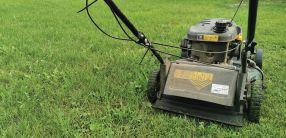
The United States is bracing for an anticipated war of lawn mowers.
A ban on the sale of small, off-road engines, including those found in lawn mowers, goes into effect next year in California, and many other states and cities are perhaps poised to follow suit.
Political pressure aimed at promoting battery-powered equipment over that powered by gasoline has led to debate in parts
of the United States about how lawns should be maintained.
Honda has recently announced it will cease manufacturing gasoline-powered lawn care equipment, including mowers, in September, but will continue to sell its inventory of gas products through 2024.
Property owners present differing points of view on the subject. Many suggest maintaining a pristine lawn is essential for attaining optimal property values. Others, however, argue the potential damage to the environment, through emissions and fuel spills, cannot be ignored.


By Mike Jiggens
Artificial turf has had its place in the lives of Canadians for the past several decades, especially in the form of sports fields. Synthetic fields have provided user groups with an additional playing surface in communities whose natural grass fields are temporarily taken out of play for a respite from excessive wear and tear, and they have allowed soccer and football games to go on as scheduled immediately following a significant rain event. Conversely, they have also come under fire by some athletes who claim the synthetic surfaces contribute to more significant injuries relative to their natural counterparts.
But what does the average person – who is not necessarily an athlete – think about artificial turf? This is a question that has intrigued Dr. Michael Barnes, an environmental social scientist from the University of Minnesota Twin Cities, who has
been studying people’s perceptions of both natural and artificial turf for the past five years.
He shared his findings in February during a virtual presentation at the Ontario Turfgrass Symposium in Guelph.
“Why does this matter?” he asked. “Turfgrass is all about people. The turf you study, maintain or make decisions about matters to so many people around you.”
Barnes’ study entailed how people use artificial turf, what they think about it, how they perceive its benefits and drawbacks, and what opinions they have about its sustainability.
Before turning his attention to artificial turf, he had visited Central Park in New York City to study how people connected with natural turf, saying the work done by researchers, turf managers and decision makers matters.
More than 6,000 acres of artificial turf surfaces have been installed in the United States alone, Barnes said, and the number is growing. Although it was primarily confined to professional athletic use, artificial turf installations have since trickled down to amateur sports, schools and other uses.
“The growth and installations are estimated to be about 33 per cent in all of North America in the coming five years, and most of that growth
is estimated to come from outside of those traditional sports field contexts and into home lawns.”
Despite its growth, artificial turf continues to be plagued by human and environmental health concerns, including the leaching of heavy metals found in the surfaces’ crumb rubber infill. The City of Boston has banned artificial turf installations in city parks, citing PFAS – or “forever chemicals” – as negatively impacting children’s health. Since enacting the ban last November, other cities in the United States have either considered implementing bans of their own or upholding those earlier approved.
“There’s a momentum with this, specifically around health.”
Aside from artificial turf’s relationship with athletic injuries and general health concerns, there has been little research directed toward its social aspect, Barnes said.
The study project he directed investigated the use and social benefits of natural turf versus artificial turf in urban settings. Three basic research questions were asked of the study’s participants:
• Use: how individuals might use each surface type differently
• Sustainability: how individuals perceive the sustainability and

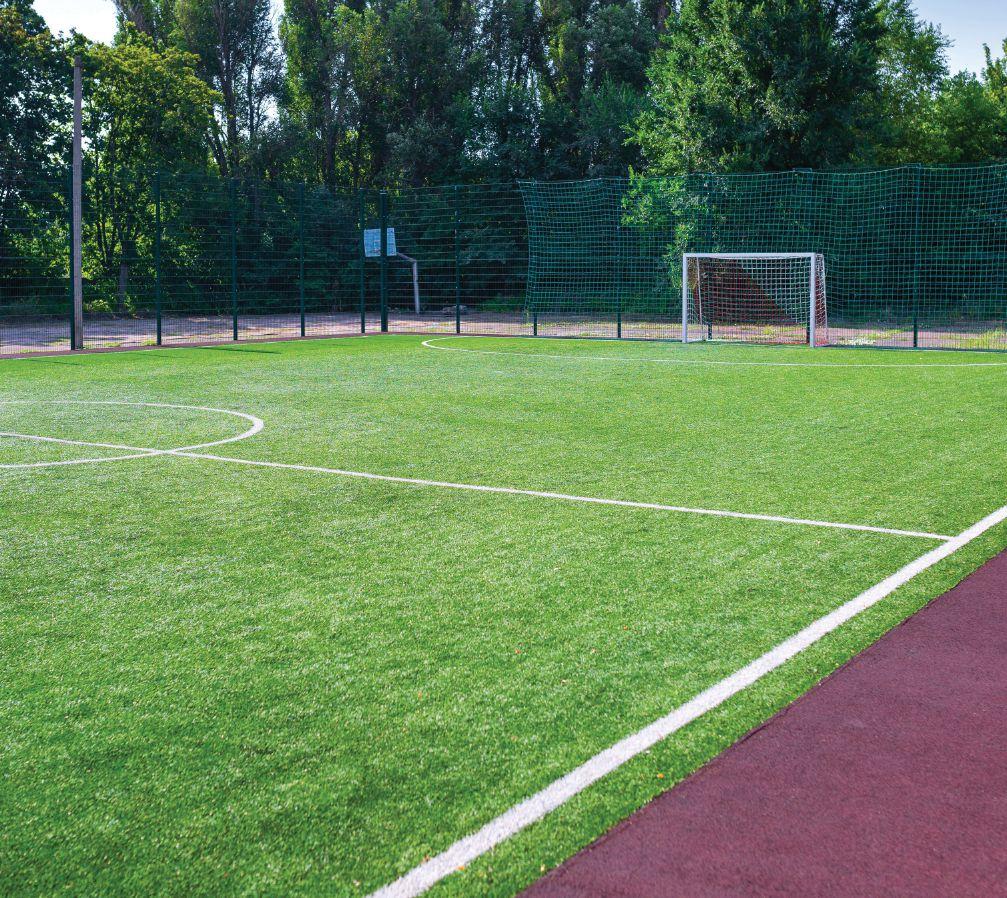
environmental aspects of each surface type
• Experience: how individuals experienced each type of surface
The study was conducted in two parts, including an online survey among 1,000 participants and an in-person analysis in which 50 people had direct contact with both types of surfaces at a pair of Minnesota parks.
Barnes said most previous studies of artificial turf were focused on use by professional and recreational athletes, but he wanted to get data from a broader population. The online survey asked 1,000 people to rate on a scale of one to seven their likelihood of performing various functions on both natural and synthetic surfaces, with one being “very
unlikely” and seven being “very likely.” Those surveyed were asked about how likely they would be to use the surfaces for having picnics, playing with children, playing with pets, playing organized sports, playing recreational sports, for rest and relaxation, for individual exercise, for group exercise, for wildlife viewing and for aesthetic viewing.
Using the same one-to-seven scale, with one representing “strongly disagreeing” and seven meaning “strongly agreeing,” those surveyed were asked how sustainable they considered the two types of surfaces might be. They were asked if they thought sustainable materials were used to attain the surface, if they required fewer natural resources, if they were environmentally friendly
and if they contributed to the health of ecosystems.
Identical data was collected from the in-person survey in which people spent time on both types of surfaces that were adjacent to one another.
“But we also added this rich narrative, open-ended data, where after people interacted with each surface. We asked them in an open-ended way how was that for you? What did you feel while you were interacting with them? What were your first thoughts?”
The natural turf field used in the survey was semi-degraded while the artificial turf field was a recent installation. Those who participated in the in-person survey were chosen randomly, and were on site either walking through the park, throwing
How likely are you to have a picnic on artificial turf?
How likely are you to play with children or pets on artificial turf?
How likely are you to play organized or recreational sports on artificial turf?
How likely are you to use artificial turf for rest or relaxation purposes?
How likely are you to use artificial turf for exercise?
How likely are you to use artificial turf for wildlife viewing?
Visit one of these participating Exmark Dealers to learn more about the full line of professional Exmark models.
CALGARY CALGARY RED DEER
ABBOTSFORD BURNABY COURTENAY KAMLOOPS KELOWNA N VANCOUVER NANAIMO SURREY VERNON
ALTONA HEADINGLEY ST ANDREWS
ALBERTA FOREST & GARDEN
BROTHERS TWO SMALL ENGINES INC FUTURE AG INC
FORESHORE EQUIPMENT AND SUPPLY
FORESHORE EQUIPMENT AND SUPPLY
PILON TOOL RENTALS 1972
B & L SMALL MOTORS LTD
SAVOY EQUIPMENT
FORESHORE EQUIPMENT AND SUPPLY .
WALKER’S SAW SHOP LTD
ARCOM POWER EQUIPMENT INC
SAVOY EQUIPMENT
ALTONA FARM SERVICE LTD ..........
HEPBURN ENTERPRISES INC
ST. ANDREWS PARTS & POWER
BOUCTOUCHE RIVERVIEW
B.M. MARINE INC
CR YARDWORKS & EQUIPMENT INC
MILFORD
ONTARIO
ARVA BRADFORD BRAMPTON BRANTFORD BURLINGTON
COURTLAND
DUNDAS ELMIRA
EMERYVILLE
EXETER HAMILTON
MAXWELL
MILLBANK
MISSISSAUGA
MISSISSAUGA
MISSISSAUGA
MITCHELL
MOUNT FOREST
STRATHROY
SUDBURY
VARS
WALLACEBURG
WELLAND
WINDSOR
THE TRACTOR DOME INC
HURON TRACTOR LTD
BRADFORD RENTAL SALES & SERIVCE .
GREEN TRACTORS INC
BOBCAT OF BRANTFORD INC
B.R. DICKSON EQUIPMENT INC
BLUE WEST EQUIPMENT INC
WPE LANDSCAPE EQUIPMENT
MARTIN’S SMALL ENGINES LTD
CAMPEAU OUTDOOR POWER EQUIP.
HURON TRACTOR LTD
OUTDOOR SUPPLIES & EQUIPMENT
MAXWELL FARM SERVICE INC
ZEHR’S SALES AND MANUFACTURING .
CURRENT POWER MACHINERY INC
W.E. ENTERPRISES LTD
WPE LANDSCAPE EQUIPMENT
MITCHELL CYCLE INC
BROADLINE EQUIPMENT LTD
CAMPBELL’S OUTDOOR POWER EQUIP.
SUDBURY SMALL ENGINE
M.R. BLAIS SALES & SERVICE INC
THE OUTDOOR STORE
DAVE’S SMALL ENGINES
VEHICLE VENTURE
LLOYDMINSTER
WICKHAM NURSERYLAND ...........
403-248-0878
403-279-2244
403-343-6101
604-744-0547
604-436-9312
250-338-5361
250-376-0033
250-868-1010
604-924-9400
250-585-1320
604-533-0081
250-545-0627
204-324-5523
204-889-3392
204-953-0030
506-743-8566
506-854-0333
frisbees or engaged in other activities. All participants were at least 18 years of age and were asked to interact with both surface types by walking on them and touching them.
Both natural and artificial turf online surveys produced numbers in the five-to-six range, leaning toward “very likely.”
”In nine out of the 10 use cases, natural turf is preferred and more likely to be used across the use cases,” Barnes said. “The only one where it’s not is playing organized sports.”
Among those who personally interacted with the two types of surfaces, they were much less likely to want to use artificial turf.
“This is saying that once people interact with it, those ratings go down.”
902-758-2220
519-666-2300
905-775-7101
905-846-2511
519-752-7900
905-331-5040
519-688-0909
905-628-3055
519-669-2884
519-727-5031
519-235-1115
905-578-2411
519-922-2108
519-595-7579
905-822-4211
905-629-1424
905-569-2055
519-348-0490
519-323-3591
519-245-2428
705-564-9772
613-443-1230
519-627-4844
905-732-2344
519-966-8642
306-825-3262
In eight of the 10 usage scenarios, the preference for natural turf was significantly higher.
Barnes said most of those surveyed online believed natural turf was more sustainable than artificial, adding the only difference was in the use of such natural resources as water and fertilizer.
A similar trend was realized from the in-person survey data. The artificial turf results dropped significantly while the natural turf data remained roughly the same.
“With the artificial, after people interact with it, they view it as less sustainable.”
Barnes picked out some of the narratives from among those surveyed.
“It’s (artificial turf) a lot hotter in the summer, but it drains better after it rains, so there aren’t as many puddles,”
one participant responded, noting that natural turf “is cooler and softer to land on. I prefer it over artificial.”
Another survey participant said, “Wishing it (artificial turf) was real grass. The bounce is unnatural, and I wind up with terrible burns whenever I play on it.”
A further comment noted, “Fields are rarely natural anymore, so even playing on one in poor condition feels like a treat.”
Barnes said the project data suggested four takeaway messages:
• Individuals prefer natural turf
• People are more likely to use natural turf across a variety of use cases
• Turf managers view natural turf as more sustainable than artificial turf
• Turf managers understand the main issues individuals have with each surface type
Barnes said now that artificial turf has spread beyond the context of sports fields, more people are engaging with synthetic surfaces. There are places in many communities where artificial turf surfaces make sense, he noted.
The project represented a way for social scientists to interact with turf scientists to help foster better decision making and achieve sustainable green spaces.
“I really think that asking people who use or live near, or who are impacted by the spaces we make decisions about, that what we manage is not only important for understanding their direct preferences and attitudes about what you do on your course or in your park, but also what you’re planning to do.”
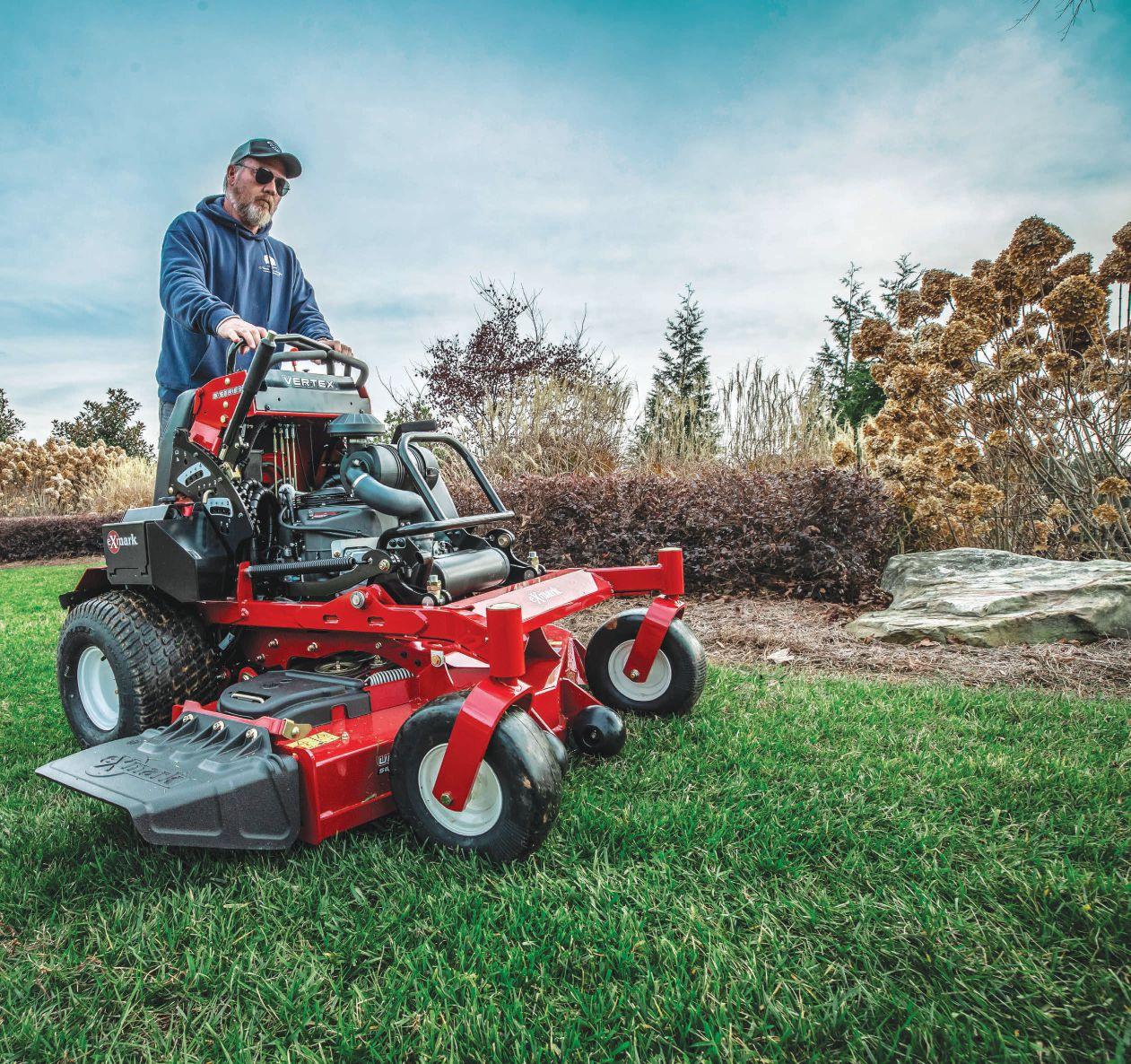
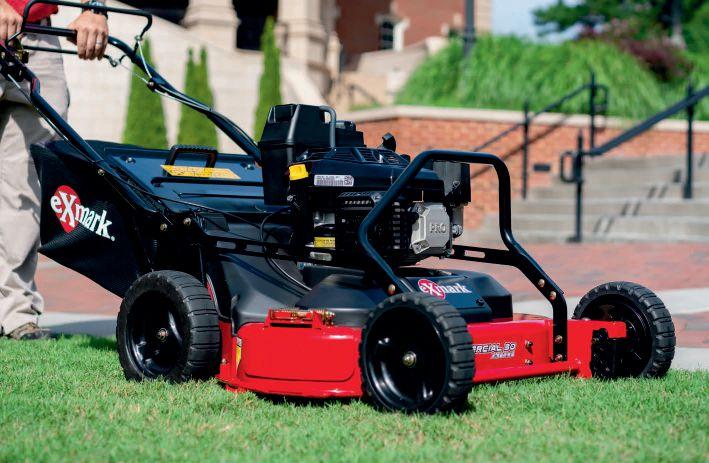

By Bryan Christiansen
Any area with a lot of foot traffic requires dedicated and regular maintenance – and sports grounds are no exception. Artificial grass must be updated every five to 10 years in high-impact locations, including football fields and sports complexes, to preserve the surface’s integrity and shock-absorbing capabilities. In lower-impact arenas, turf can last up to 20 years if properly maintained.
Regardless of the season, field maintenance managers and athletic managers of multi-sport fields must prioritize ground maintenance to maintain award-winning turf all year long. The purpose of maintaining artificial turf fields goes beyond keeping them looking good; it’s also about ensuring the safety of athletes. Simply put, compacted turf doesn’t provide the cushion and safe landing that artificial turf is meant to provide.
Although daily field inspections are part of the maintenance routine, following this five-point checklist will help your complex maintain its turf properly.
Regular field grooming is a necessary component of proper upkeep, recommended
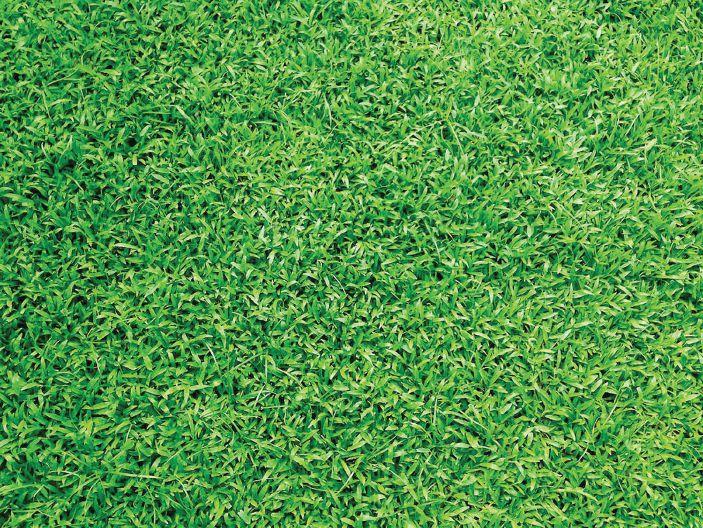
after every 40 hours of use. Grooming includes removing dirt or garbage, examining the infill levels, and brushing the fibres. Setting up visual inspections and debris removal, other preventive maintenance activities, and keeping track of their execution is a challenging task if done manually – that’s where a computer maintenance management system (CMMS) comes in.
This is the perfect time to drag-brush the field so the sand infill will be evenly spread, preventing the turf’s hardening. Check the infill depth and apply a contact
disinfectant with every cleaning. Any skinned areas of the turf should be remedied with a turf conditioner during field grooming. Turf conditioner can be applied with plastic leaf rakes or a drag mat. Keep in mind that the field will need to be rolled after the use of a turf conditioner, so you’ll need to leave ample time before play for the field to be wet and rolled before use.
Maintaining the skinned areas will promote good drainage and prevent additional infill compaction. Nonetheless, the field should not be trimmed on game day.
Reliability depends on maintenance for a stable, efficient, optimized program to deliver reliable data and maximum achievable reliability.
Maintenance relies on reliability to analyze, research, design, and modify equipment to improve reliability and availability once maintenance has reached maximum cost-efficiency. The

To maintain the uniformity of the infill across the grass, a day must pass between grooming and field use. Utilizing a CMMS to monitor field maintenance may keep the maintenance personnel on track with grass upkeep and field grooming.
During the inspection and preventive maintenance in the field, any dangers or actionable maintenance items should be recorded and classified as shown in the preceding chart. A CMMS system enables all inspection items to be tracked and maintenance work orders to be produced, so that any safety issues can be resolved before the game begins.
• You can use a plastic turf rake to remove leaves or other organic matter from the turf. Don’t use any metal rakes or other metal yard tools on your artificial turf.
• Use leaf blowers for dry leaf and organic debris removal.
• Have a supply of organic cleanser to routinely wash the turf.
• Employ a grooming brush or power grooming brush


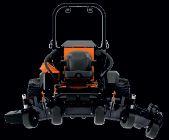
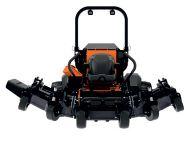


Lastec flex deck zero turn mowers feature independently flexing decks, patented low maintenance belt-driven decks, and zero turn maneuverability. In addition to the massive 120" wide WZ1000 being the world’s largest flex deck zero turn mower, Lastec offers a complete range of flex deck commercial grade zero turn mowers for commercial landscapers, lawn care professionals, and golf courses. Perfect the Art of Mowing with Lastec mowers.


to perk up the grass fibres after the debris has been removed and the turf has been washed.
The subsoil – and not the grass itself – is responsible for collecting standing water. This is why good field drainage is emphasized before the installation of turf – grading equally, and proper drainage layers are both required before the turf is laid. When artificial turf is installed on an improperly graded subbase, it may develop wrinkles and holes, rendering it unfit for play.
Due to weed development in the sub base, the turf’s drainage pores may get plugged. This will cause difficulties with standing water. If standing water has become a problem, incorrect grading is most likely to blame. For effective drainage, the weed barrier will need to be replaced after regrading occurs.
Even if you routinely maintain your grass field to eliminate tiny particles and dirt, extensive cleanings must be performed annually. In addition to the decompaction of the infill, the yearly comprehensive cleaning offers an opportunity to evaluate and remedy any faults with the field. If there was insufficient time between games to apply field conditioner, damaged sections of the field may also be repaired.
During the yearly cleaning, a moss and algae treatment should also be used to prevent any growth. Unless there is a specific problem with the grass that requires soaking and application of a turf conditioner, the standard detergent and disinfectant may be utilized. Log yearly cleaning in your CMMS, and make sure to record any extra work conducted during the annual cleaning in the preventive maintenance module to ensure that it is regularly handled.
In time, the accumulation of dirt, leaves, and other organic debris will cause the turf to harden and become compacted. An infill decompaction will return the turf to its former state and maintain its lushness and playability. A drag brush and drag mat are used to decompact the infill and uniformly distribute it throughout the turf. This will eliminate any abrasive regions and prepare the turf for any subsequent infill installation.
Regular turf management should include infill decompaction and a comprehensive cleaning once a year. This allows adding infill to high traffic areas, and offers the ideal chance to inspect the turf for seam rips and trip hazards. You may apply infill by hand and distribute it with a plastic leaf rake, or you can use a motorized groomer for bigger areas.
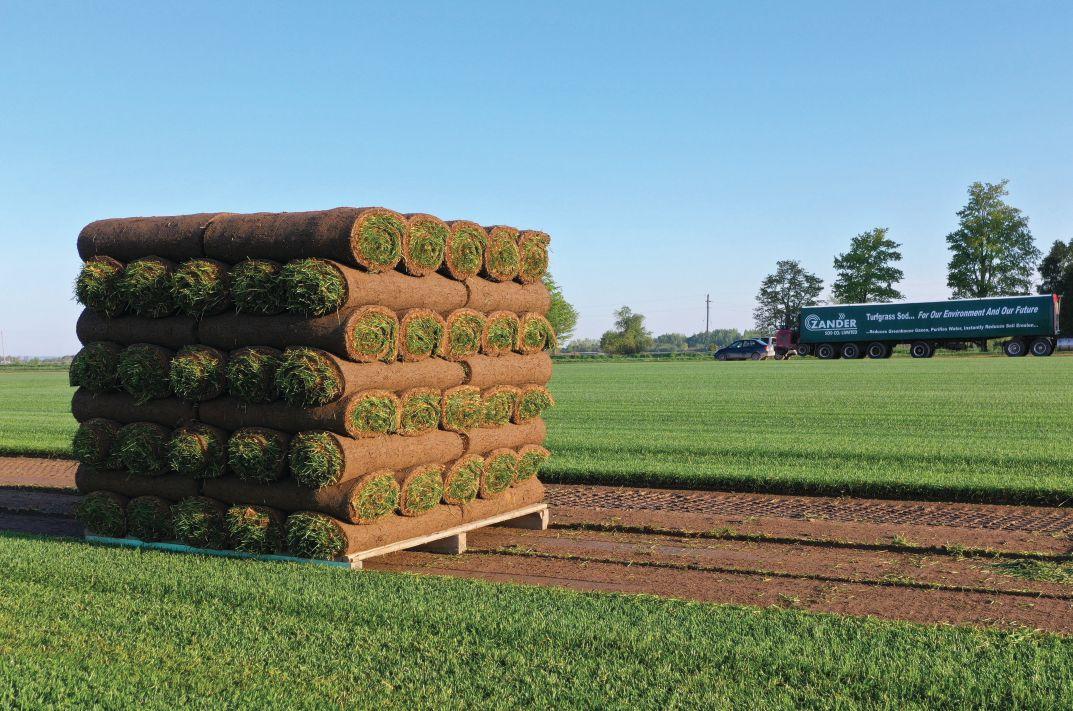

80% of the bag contains Target Specialty Products’ proprietary organic granulated compost which is CFIA approved for use in Canada.
20% of the bag is grass seed, including
• Two certified varieties of Perennial Ryegrass, selected for:
- Spreading Ability;
- High Heat, Drought and Humidity Tolerance;
- Highest Cold Tolerance Rating;
- High Salt Tolerance;
• Certified Kentucky Bluegrass variety, selected for:
- Fast Germination/ Establishment
- Excellent Tillering
- High Wear Tolerance
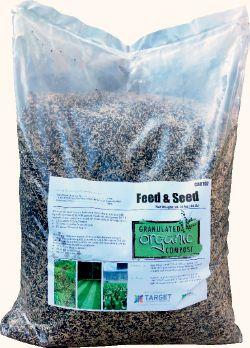
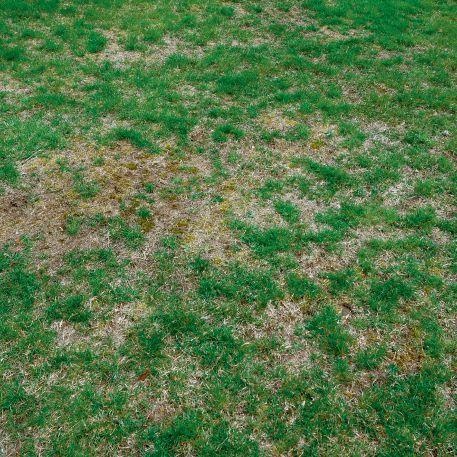
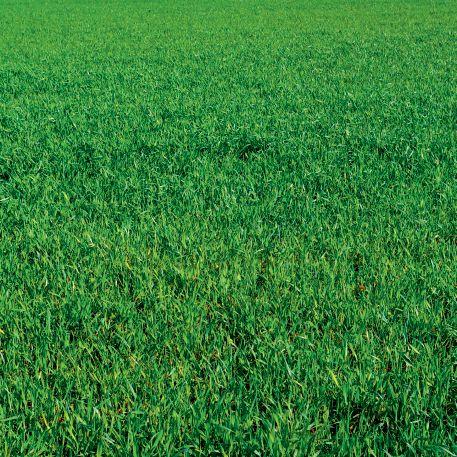
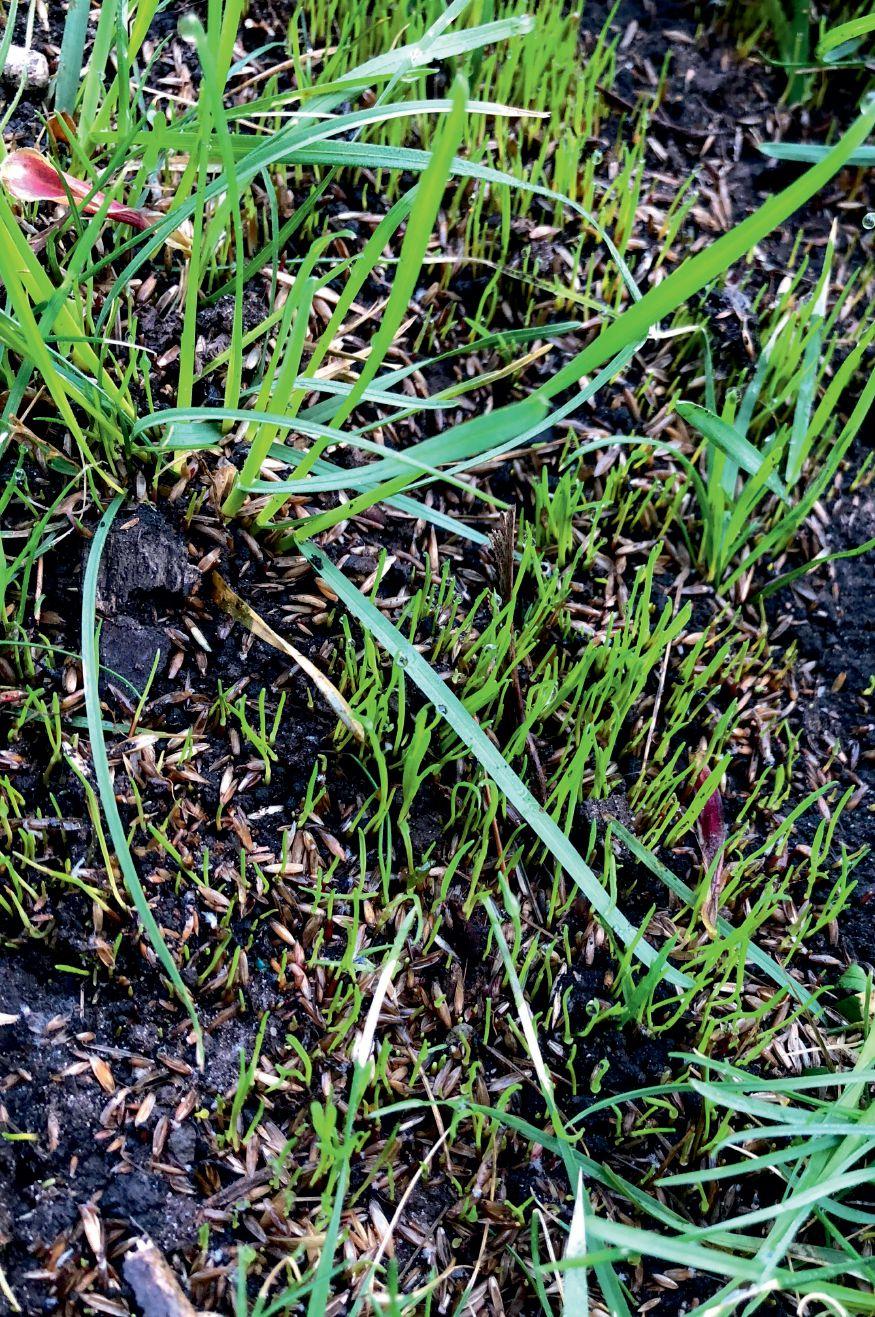
info@target-specialty.com

By Julia Webber
To dig or not to dig. This is always a challenging question for our customers when faced with an aging pond. Let’s look at the strengths and shortcomings of different pond restoration methods so you know what to expect. There are essentially two main restoration methods for an older pond that has started to fill in: biological removal and manual removal. Which will work best depends on the pond’s condition, setup and your timeline.
How does a pond that started out as a clean-dug hole end up as a pond that has filled in and is unsightly? Essentially, everything that has been in the pond over the years or blown into the pond has stayed there and is now very slowly break-

ing down at the bottom. This breakdown, especially without oxygen, can be substantially slower than it is accumulating, so the pond becomes shallower.
To add to the problem, the thicker this layer of dead weeds and debris on the bottom becomes, the slower it can break down, as oxygen only reaches the very top. Shallow ponds with good organic layers at the bottom will cause plant life to thrive and multiply. This means you have even
more plants that will grow and then die off in the fall and sink to the bottom.
On and on it goes until you have a puddle in the middle of a swamp! I bring this up so that we realize this is where all ponds are headed unless we intervene. This is the natural progression. We can start restoring a pond long before it reaches the point where it really is not a pond anymore if we are aware of this progression.
Now that we know that ponds are filled

in by organic matter – what you would call compost in a garden – we can look at options for removing it. The first option for restoring a pond would be biological removal. This process uses aeration and probiotics to break down the organics in the pond at a much more rapid rate than would naturally occur. Pond probiotics, like the ones we use for our digestive system, are beneficial bacteria that are targeted to a specific task. In this case we use aerobic (oxygen-loving) bacteria that are safe for the environment, humans, pets and wildlife. These bacteria use the organic layer in your pond as a food source and redirect it into the food chain instead of it fertilizing weed and algae growth.
Biological pond restoration allows you to restore your pond in a way that is safe and natural while not disturbing the wildlife. This can save long hours of capturing fish and other wildlife as well as finding ways to keep them while the pond is being cleaned. This is also easy for property owners to apply themselves.
It is, however, a slow process, often taking at least two to three years to see results as our colder climate makes the application season so limited. As this process does take time, it is not always the best fit for ponds that have become very shallow and are hard to access, but it can be a great fit for ponds that are earlier in the process to prevent them from getting to this point.
The other place that this biological process is very helpful for are ponds that are connected to a river, also called inline ponds. Because of their integration into a water course and possible proximity to sensitive ecosystems, this type of pond generally cannot use manual removal methods. This is because there is a high likelihood of organic material washing downstream, causing harm to sensitive habitat, smothering eggs and clogging streamflow. In this case, by using the slower biological method, the pond can still be maintained while protecting the ecosystems and avoiding problems with local conservation agencies.
The other method of removal is one we
are more familiar with: manual removal. This involves bringing in equipment to clean out the pond – generally excavators and dump trucks. There are new techniques now though that use suction dredging to pump debris off the bottom without having to drain the pond. Both
methods involve large equipment and will mean hauling away the organic material. As such, they can be very costly and may involve getting permits. The process can be done relatively quickly and will clear the pond of not only organic material, but likely also many weeds.
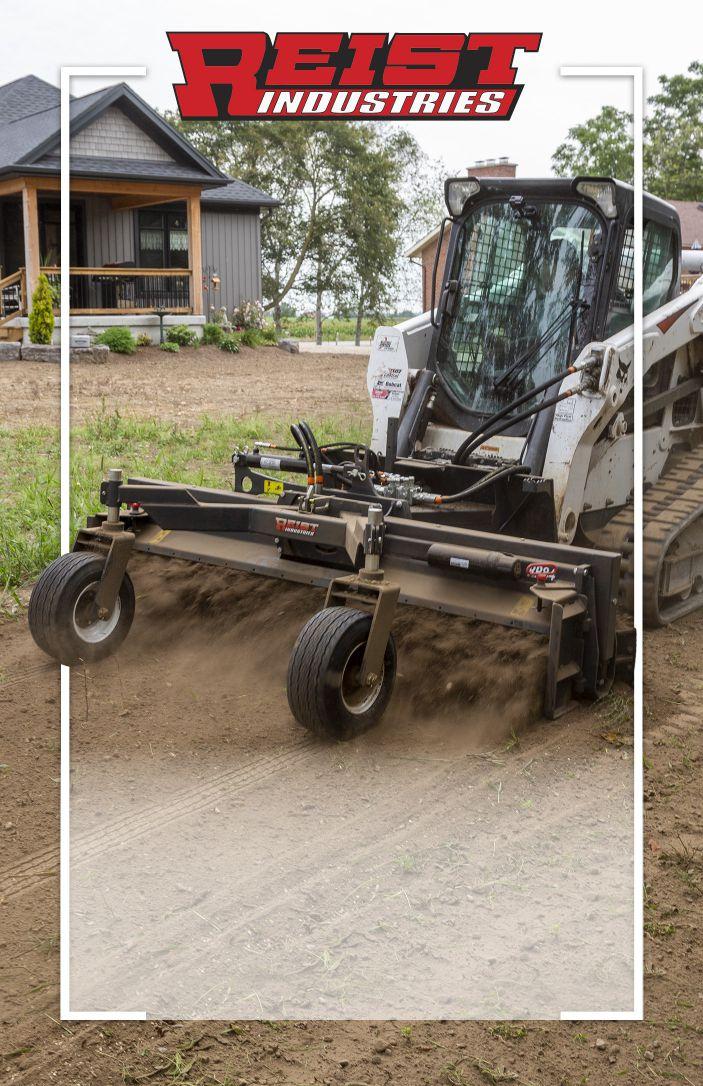
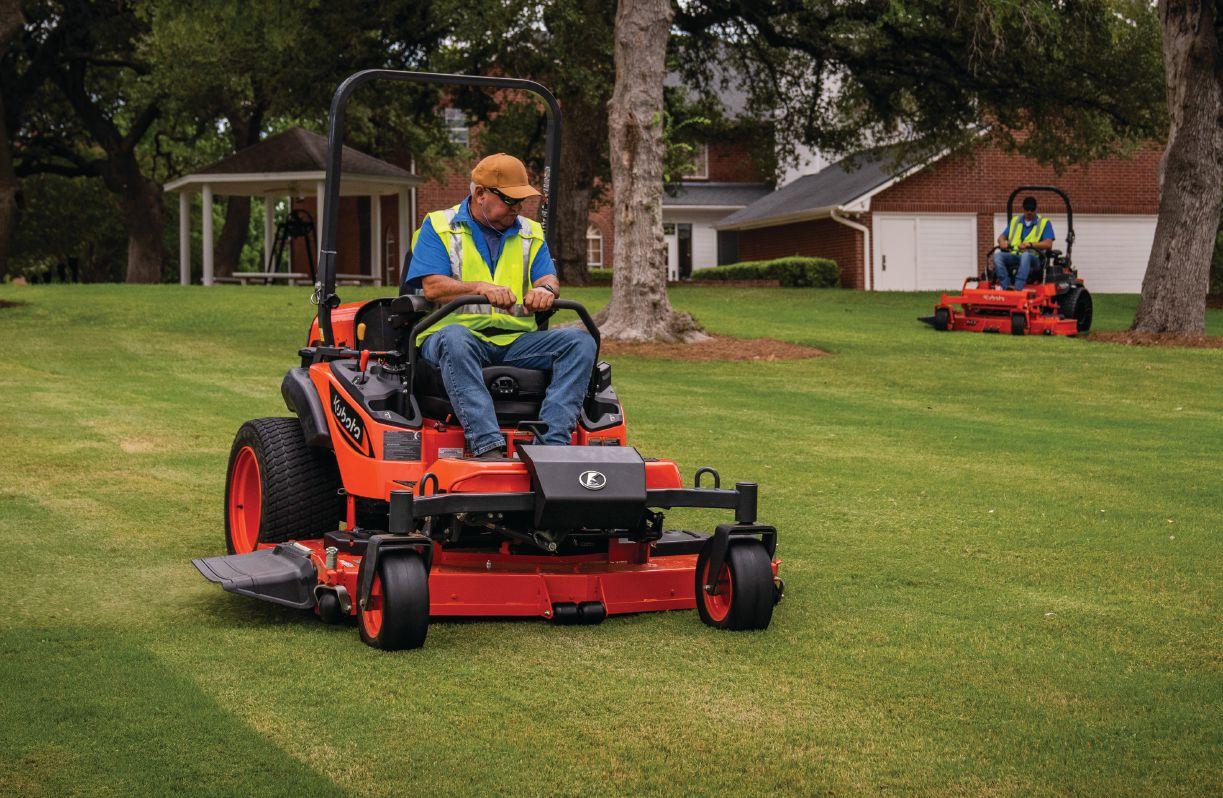
Justin
Summer is an exciting time of year for many. With warmer months, greener grass and longer days, landscaping crews are out in full force keeping greenspaces maintained and looking their best. But, to ensure lawn equipment is functioning at its fullest potential, it is important that landscaping professionals prioritize proper mower maintenance and preparation.
Conducting comprehensive equipment maintenance during the fall and winter months is a common practice in the commercial landscape world. However, many landscape professionals often fall short on essential maintenance routines during the summer when business is at its peak. Making sure equipment is running properly from day to day can be the difference between losses and profits.
Here are a few tips turf professionals can start doing today to keep their machines running all summer long:
Starting off on the right foot can be made simple by taking time leading up to the season to review the equipment and perform maintenance before the busy season starts. Giving each mower a thorough check over should limit breakdowns in the future and get any kinks worked out from the winter.
Even the highest quality mowers benefit from regular maintenance and proper care which can include the following:
Good fuel is essential to the proper starting and running of a mower. Gasoline tends to degrade after a couple of months, whereas
diesel can be prone to water contamination which could lead to bacteria growth. For both gasoline and diesel engines, it’s important to store them with a full tank of fresh fuel to prevent water condensation which occurs from outdoor temperature changes. For gasoline engines, using low ethanol gasoline and adding fuel stabilizer before storage will extend its useful life and ensure a smooth start in the spring.
If you didn’t change the engine oil before storage, you’ll want to do so before the first mow of the season. Dirty oil can damage your engine, shorten the engine’s life, and cause future maintenance problems. Most manufacturers recommend changing your oil and filter between 100 and 200 hours of mower usage or once a year, whichever comes first.
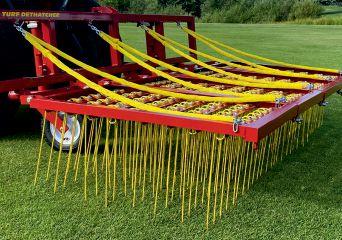
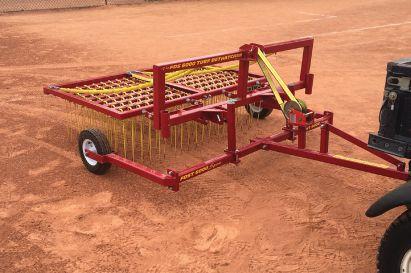
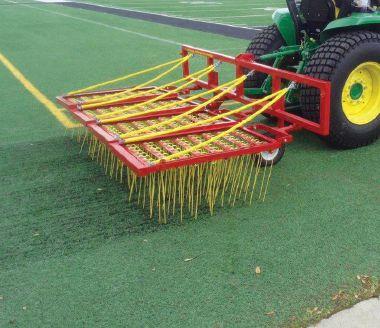
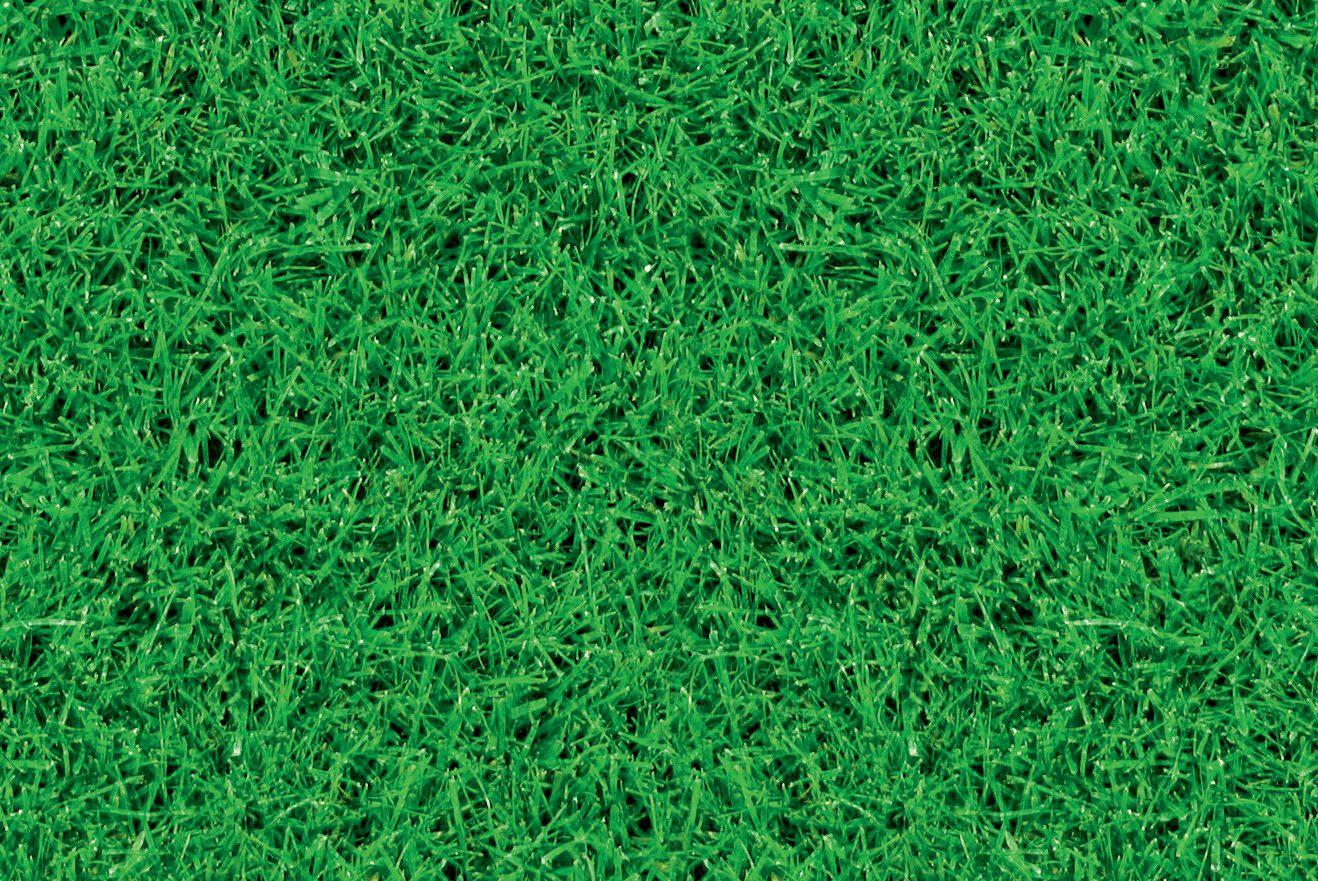

When changing your oil, be sure to allow the engine to cool down, as the oil inside will be hot and could cause burns. It’s best to follow the owner’s manual for your specific machine for oil change intervals and safety precautions.
Mower blades, especially at the commercial level, can become dull over time and with use, impacting your results and causing a delay in efficiency. A dull mower blade only tears the grass instead of giving it a nice clean cut which can negatively affect the lawn’s health. Dull mower blades can slow down your crew’s productivity and hurt your bottom line. Blade sharpening intervals can vary on conditions, impacts and hour usage – it’s good practice to check the mower blade condition every day and sharpen as needed. Sharp blades will help deliver the clean, professional-looking cut that customers are looking for.
Whether you’re a solo operation or a fleet manager, making sure the critical elements of your equipment are functioning properly will lead to less time and money spent on repairs. Make time each day during the busy months to do a circle check, looking
“Giving each mower a thorough check over should limit breakdowns.”
for proper fluid levels, correct tire pressure, ensuring radiator screens are not clogged, inspecting all belts for failure points, and verifying that all switches are working properly to ensure your equipment works as hard as you do and won’t need a day off in shop.
For employers, hold a session with all new and pre-existing employees to make sure they know how to operate, understand the machine warning lights, and perform simple inspections on all equipment. Let both new and returning employees know how your company operates and what the expectations are when it comes to handling equipment. Keeping a logbook in the truck or trailer can help ensure daily check points are being followed and machine defects noted. The more knowledge employees have on what to look out for, the sooner potential equipment problems can be addressed.
Time spent dealing with a breakdown or waiting for parts greatly impacts profit and efficiency. Therefore, keeping a handful of spare parts available either in employee vehicles or at your commercial garage will limit downtime for minor or common issues. It is also recommended that everyone knows how to perform basic maintenance on the mowers in your fleet. Having commonly needed parts, such as blades, belts, and filters, when you need them means less time at the dealer, or time waiting for parts to arrive.
Ensuring mowers are kept in good condition will ultimately increase their longevity and lifespan. Therefore, daily cleaning makes a difference in the long run. This includes blowing or washing off the underside of mowers, emptying baggage compartments and the removal of any dust or buildup on other areas of the mower. Grass,
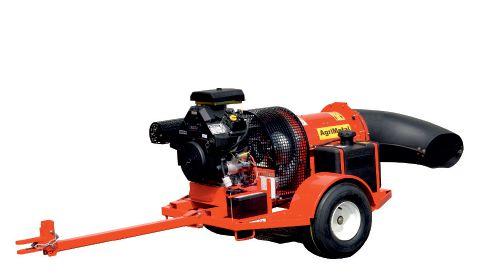


twigs and leaves clumped up in the mower or engine compartment can greatly impact its performance and accelerate wear if not dealt with properly. Keeping your machine clean will protect your investment and give a professional look while out on the jobsite.
If you’re beginning to grow your business and are considering expanding your fleet, take the time to meet with your local dealers and see what services beyond the sale of the machine they can offer you. Finding a dealer that not only sells a good product but also stands behind it can give you confidence that any issues will be solved quickly, reducing your downtime. Building a relationship with a dealer and brand you trust can be advantageous for multi-unit discounts at purchase and parts
commonality between mowers, reducing the part stocking needed. You will also find it helpful and more efficient to have similar models within your fleet when it comes to maintenance and employee training. Each manufacturer will design their equipment with different operating and maintenance access points, so when you become accustomed to one machine, it will find it helpful and more efficient to have similar models within the fleet.
Lawn care season is an exciting and busy time that doesn’t need to be bogged down with the stress of breakdowns or time spent in the shop. Ensuring your fleet is properly prepared is a simple task that with a bit of time and dedication can save money and improve the outlook of your business in the
ai1681314469190_De Groot 3.475 x 4.75 Ad.pdf 1 2023-04-12 11:47:50 AM
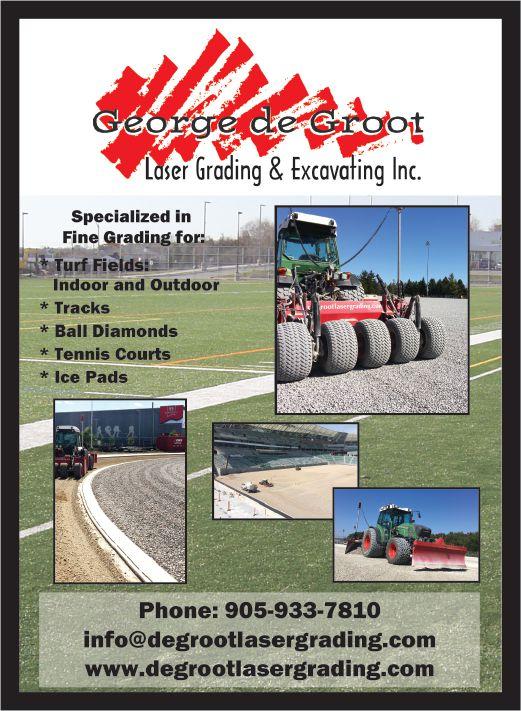
long run. Commercial landscaping is demanding, creating increased wear and tear on mowers, therefore upkeep and maintenance ensures projects go smoothly and that minimal damage happens to the mower, prolonging their lifespan.
Daily checks, keeping parts on hand and ensuring your employees are properly trained are preventative tasks that ensure your fleet and business is successful throughout the summer. In addition to frequent maintenance checks and proper care, it is wise to invest in mowers which fit your company’s needs for size, productivity and durability. Your knowledgeable local dealer can help guide you towards a suitable machine that fits your needs.
Justin Parrott is Kubota Canada’s turf and RTV product manager.


info@skynets.ca
www.skynets.ca

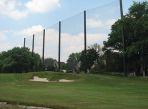
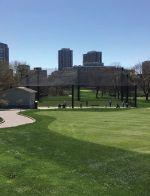
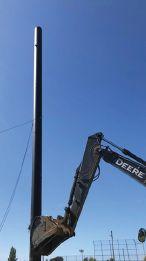
9:51 AM
By Dr. Sara Stricker
An initiative sprang up in the United Kingdom in 2019 and was officially dubbed “No Mow May” by the conservation charity PlantLife. The theory was that roadsides, lawns, and parks could provide an early-season food source through the flowering weeds such as dandelions. This year, the Guelph Turfgrass Institute (GTI) was asked to weigh in on this topic and share recommendations based on science.
Dr. Eric Lyons, Dr. Katerina Jordan, and I spoke to various media platforms, and they raised several great questions.
Why do we mow grass?
The establishment of permanent structures and property lines in North America links back to colonization by European settlers. The mowed lawns that exist today are functioning to reduce mice, biting/ stinging insects, and noxious weeds from establishing next to our homes. Mowing grassy areas next to buildings also prevents the establishment of woody trees and bushes since roots can damage foundations and branches can damage roofs.
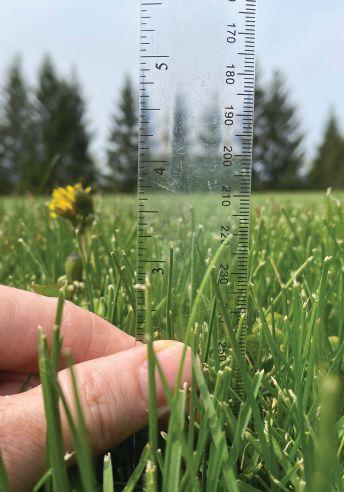

Why does the GTI support a non-native monoculture (turfgrass)?
The research at the GTI aims to improve the sustainability of turfgrass. When we refer to turfgrass, it means a stand of grass which has a functional purpose. This includes parks for recreation and cooling the surrounding community, sports fields for fitness and the economics of minor and major league teams, roadsides for safety and visibility, and lawns for kids and dogs and social gatherings. Turfgrass species have been selectively bred over time to tolerate traffic, play, and mowing.
The researchers at the GTI are not enforcing pristine monoculture grass for every homeowner, and, in fact, we suggest adding mowing-tolerant flowers to some lawns to increase biodiversity and support pollinators. Depending on the hardiness zone, homeowners could add creeping buttercup, English daisy, wild strawberry, crocus, or snowdrop into an existing lawn to provide pollen and nectar resources.
These species can be mowed to maintain the buffering function of lawns around homes, preventing the establishment of
pest species and noxious weeds. It’s important to note that these flowering species are less tolerant to traffic and are not recommended for sport fields or areas where kids and pets are playing.
The argument against turfgrasses as “non-native species” again links back to colonization. When our cities and towns were mapped out by urban planners, they brought with them European species (grasses) to create mowed buffers between buildings and functional green spaces. Instead of thinking about “native-ness,” I suggest thinking about functionality, because no one is complaining that most crops grown in Canada originated from around the world. The grasses native to Canada have not been selectively bred over time to tolerate mowing and are not recommended for
use as a lawn. However, they are great additions to naturalized areas and gardens. This includes little bluestem, big bluestem, sweetgrass, Canadian wild rye, and switchgrass.
How can grassy areas be more environmentally friendly?
Grassy areas can be low input – requiring no water or fertilizer or chemicals – if the users adjust their expectations. Not every lawn needs to look like a golf course, and each property owner should be allowed to decide how to use their space. If you want a large flower garden and have the resources to create and care for it, then plant a garden. If you want an area to play or have minimal time and effort to devote to gardening, then we recommend grass. A few tips include:
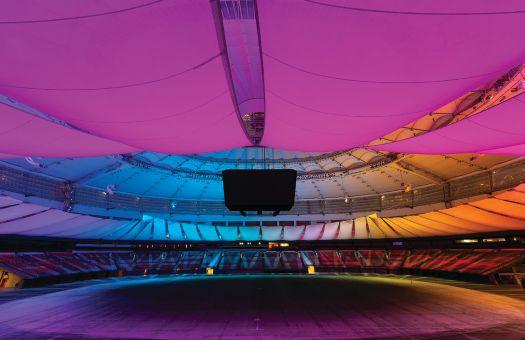
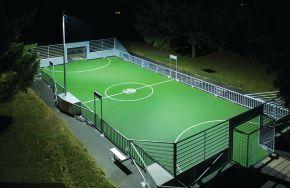
• If you choose to water the grass, do so deeply and infrequently. This encourages deep roots and increases tolerance for drought stress.
• Overseed with drought-tolerant species like tall fescue, but this species is less cold-tolerant than Kentucky bluegrass and may not survive in all Canadian regions.
• Do not remove grass clippings. These add nutrients and organic matter to the soil as they decompose.
• Create a dense stand of turf to out-compete weeds. Overseeding in the spring or fall is recommended.
• In fall, mulch fallen leaves into the turf with a mulching mower to act as a natural fertilizer.
• Hand pick unwanted weeds and add seed into bare patches to prevent future weeds.

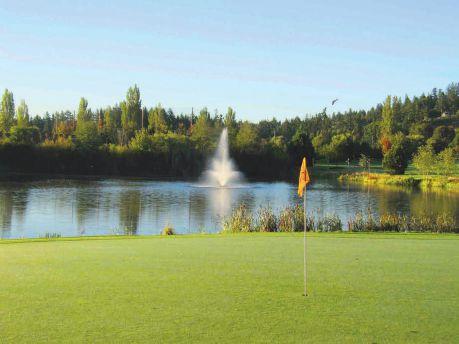
Should I stop mowing the dandelions?
Firstly, dandelions are incomplete pollen sources for our native pollinator species. Next, look around your neighbourhood. If you have a neighbour who has decided to create a dense and weed-free stand of turfgrass, then your dandelion field will likely cause some irritation to that neighbour who may then decide to use more herbicides. Lastly, dandelions are tolerant to mowing, so mowing on a regular basis won’t eliminate them.
Preliminary data from our No Mow May experiment suggests that there are similar numbers of flowering dandelions in mowed and unmowed plots. When measured directly after mowing, the flower heads in the mowing treatment were cut off, resulting in a lower number of flowers on May 5. However, the number of flowers was not statistically different between treatments five days later.
When should I cut my grass?
It depends on several factors. Different turfgrass species have different recommended mowing heights. The mowing height is also dependent on the use of the grass and how frequently you are willing
to mow. Maintaining the turfgrass at a higher height of cut means you can mow less frequently.
We recommend following “the onethird rule” which states to never remove more than one-third the height of the plant during any mowing event. If your target mowing height is 7.5 centimetres, then you should mow the grass before the turf reaches 11 centimetres tall.
If the grass has been let to grow too tall, it is important not to suddenly cut the turfgrass down in one mowing event. This can result in scalping, where your mowing removes the entire leaf blade and drastically limits the plant’s ability to photosynthesize and grow. In some cases of severe scalping, the crown itself can be damaged, resulting in death of the turfgrass plant and the need for reseeding to re-establish the turf. We recommend to slowly lower the mowing height over time and maintain each successive height for a week or two, until the grass is fully recovered.
Research from the University of Massachusetts recommends decreasing mowing frequency to support pollinators. Their findings suggest that tall grassy areas
(greater than 15 centimetres) limit flowering species through competition and shading. The optimum mowing frequency for bee abundance was every two weeks, when grass was approximately 12.5 centimetres tall, as opposed to weekly or every three weeks. The study cut the grass down to 6.35 centimetres at each mowing event, which is more than the one-third recommended in one mow, so the turf may have been a little stressed. It’s a balancing act between turf health and flowers.
If you want a functional lawn, then you could create a naturalized area on the property which includes tall grass, wildflowers, and decomposing leaves and wood. This would create nesting sites and food sources for bees, butterflies, flies, moths, and other beneficial insects. The key is to have a mowed buffer zone (and possibly a fence) around the naturalized areas to keep dogs and kids safe. Pests like wasps, fleas, and ticks will be just as likely to nest in a naturalized area if given the opportunity.
The GTI aims to offer research, outreach, and education. What we do not want is for a homeowner (who wishes to have a functional lawn in the future) to practice #NoMowMay and then struggle to return their grassland into a lawn in June.


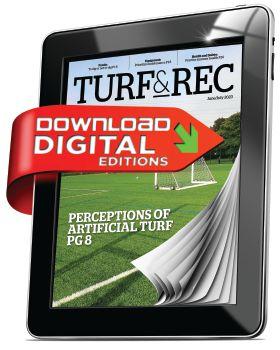
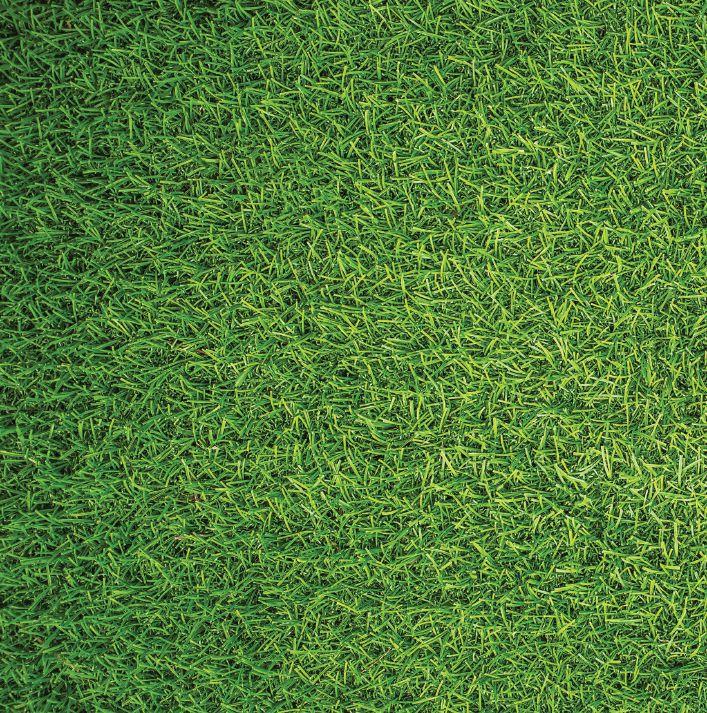
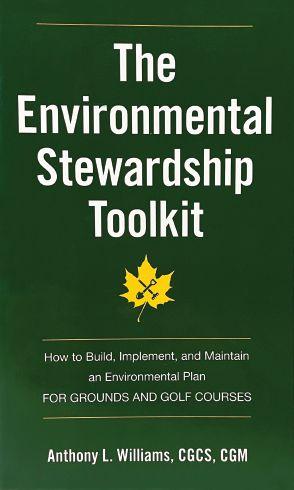

This highly practical guide covers the full complement of tools green industry professionals need to create a successful environmental program on golf courses and grounds. The Environmental Stewardship Toolkit offers a comprehensive analysis of all relevant issues, including environmental management, resource management, community engagement, and document management.
The emphasis throughout is on the development of programs that are both sustainable and practical, combining the protection and renewal of environmental systems with a workable business plan. Regulatory issues as well as concerns of owners, customers, and the community at large are also addressed.


By CCOHS
The Canadian Centre for Occupational Health and Safety (CCOHS) promotes the total well being of workers in Canada by providing information, training, education, systems and solutions that support health and safety programs and injury and illness prevention. www.ccohs.ca
Many outdoor workers welcome summer as their busiest and most lucrative season. But along with soaring temperatures and growing vegetation come several potential hazards, which is why it’s important to stay vigilant and take protective measures.
Here are four tips for improving health and safety in an outdoor work environment:
Keep the biters at bay
The pesky mosquito bites that start to appear with heat and humidity may give you more than an itch – they can also infect you with West Nile virus, which may cause severe illness, and could even lead to death. Most people infected with West Nile virus have either no symptoms, or they have flu-like symptoms such as fever, headache, or body aches.
The greatest risk of developing West Nile virus happens between dusk and dawn. Workers should wear appropriate protective clothing including socks, shoes, light-coloured long pants (less attractive to mosquitoes), and long-sleeved shirts. Spray clothing with insect repellent containing DEET, an active ingredient that prevents mosquitoes from biting through thin clothing.
Try to eliminate mosquito breeding grounds by preventing or removing stagnant water. Regularly drain water from wheelbarrows, pool covers, flowerpot saucers, garbage cans, and other containers. Change bird bath water twice a week, cover, or screen groundwater barrels, and chlorinate the water in ornamental ponds.
Don’t forget to carry a first aid kit and a “bee sting” kit if there is a risk of injury or a severe allergic reaction to an insect sting. You should alert your supervisor if you sustain any injuries or allergic reactions, and make sure co-workers are trained to assist.

Pesky mosquito bites begin to appear with heat and humidity.
Environment Canada says lightning kills six to 12 people every year and seriously injures another 60 to 70. Prime thunderstorm times in Canada are April to October in the late afternoon or evening, and just before sunrise.
There is no safe place to be outdoors during a storm, however, there are some steps you can take to help reduce the risk of being struck by lightning. The safest place to be in a thunderstorm is inside a fully enclosed building that has electrical wiring, plumbing, a telephone line, or antennas to ground the lightning if the building should be hit directly. Stay away from doors, windows, and anything that will conduct electricity such as radiators, stoves, sinks, and metal pipes. Use only battery-operated telephones and appliances during the storm.
The next best place to wait out a storm is in an enclosed metal vehicle that is not parked near trees or anything tall that could fall over. Roll up the windows and be careful not to touch any part of the metal frame or any wired device in the vehicle (including the steering wheel or a pluggedin cell phone).
To protect yourself, stay away from tall
objects, water, and anything that conducts electricity. You can take shelter in lowlying areas such as valleys or ditches but watch for flooding.
Covered picnic shelters, carports, tents, and baseball dugouts with no electricity or plumbing to ground the lightning are not safe. If you are in a group in the open, spread out several metres apart from one another. If you feel your hair stand on end, lightning may be about to hit you. Crouch down on the balls of your feet immediately with feet together, place your arms around your knees, and bend forward. Don’t lie flat.
Remember the 30-30 rule: when you can count 30 seconds or less between lightning and thunder, head for safe shelter and remain there for 30 minutes after the last thunder clap.
When working outdoors, it is crucial to take precautions to prevent your body from overheating. Stay hydrated. Whether or not you feel thirsty, it is extremely important to drink plenty of water, generally one cup of water every 15 to 20 minutes, to replace the fluids you lose in the heat.
Keep cool. For landscapers, staying out of the sun altogether is next to impossible, but try to save demanding tasks for the early morning or late afternoon hours when the sun is less intense. Take breaks from the sun and heat to cool off in the shade or in air-conditioned buildings or vehicles.
Wear lightweight, loose-fitting clothing, UV-rated sunglasses, and a wide-brim hat for protection. Apply sunscreen with a sun protection factor (SPF) of 30 or higher.
The summer heat and humidity can increase air pollution, making it harder for people with bronchitis, emphysema and asthma to breathe, or cause heart problems in others. To protect yourself, check the air quality health index from Environment and Climate Change Canada.


If you have the will to take

ECHO eFORCE™ gives you the convenience and versatility of one battery platform for all your ECHO 56V battery-powered units.



